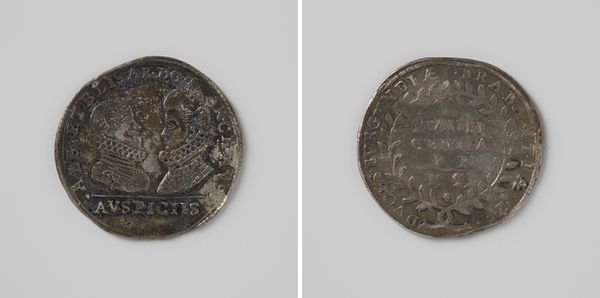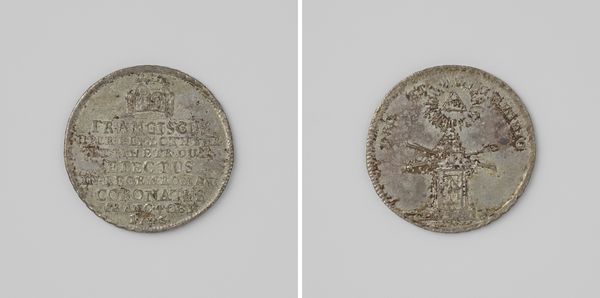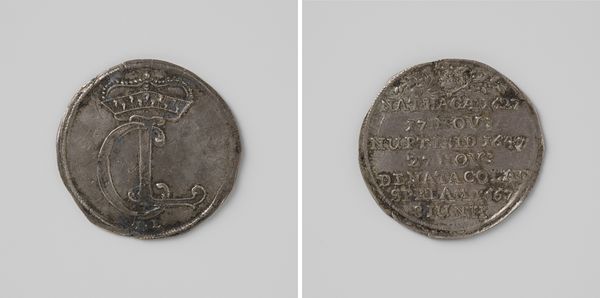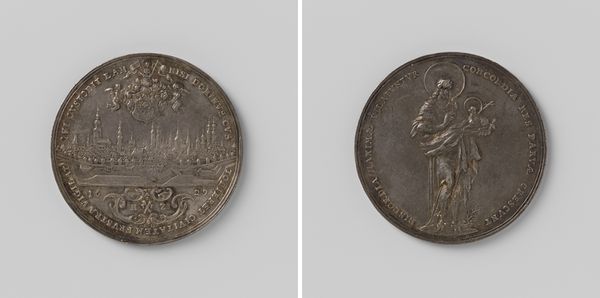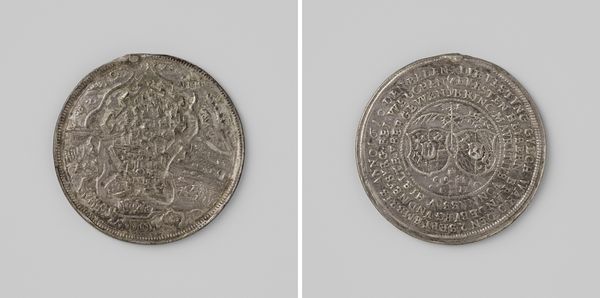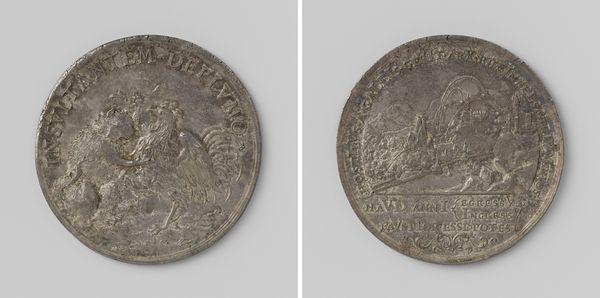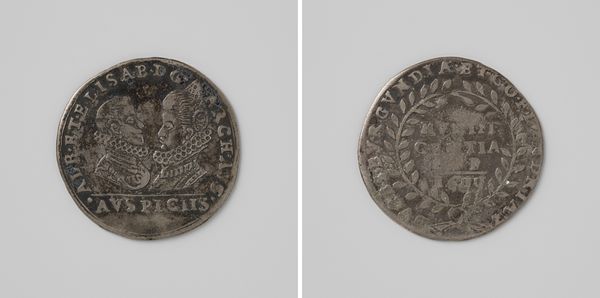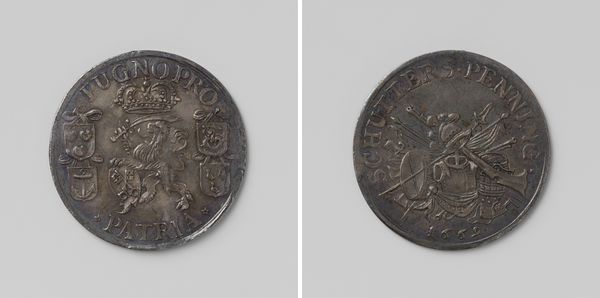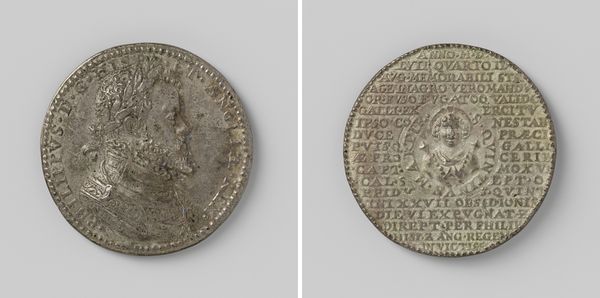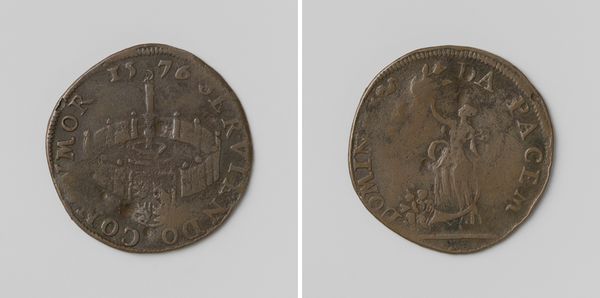
metal, sculpture
#
portrait
#
metal
#
sculpture
#
11_renaissance
#
sculpture
#
history-painting
Dimensions: diameter 3 cm, weight 8.68 gr
Copyright: Rijks Museum: Open Domain
Curator: Up next, we have a medal crafted in 1586 by Antonio Abondio: “Ernst, Archduke of Austria”. It's made of metal. Editor: At first glance, it's clear this is intended to project power. The metal surface, though aged, still carries the precision of the engraving. Curator: Indeed. Medals like these served a crucial purpose in Renaissance Europe. They were often commissioned to commemorate individuals of power or to mark significant political events, almost functioning as a form of propaganda. Editor: I am particularly struck by the archduke's features rendered in profile, and framed within the perfect circle, and how it seems designed to communicate immutable authority. Notice the details of his garments against the rougher texture of his face. Curator: Precisely. The image of Ernst, Archduke of Austria, served to underscore his political influence in a fragmented Europe. Furthermore, medals such as this would be exchanged within courtly circles, reaffirming allegiances, or, equally, making silent claims of wealth and stature. Editor: Let's talk about the reverse side. It appears to be crowned and circled by stylized vegetal ornaments along with an inscription that seems religious, perhaps indicating his belief system was inseparable from his rule. The text certainly contributes to its visual weight. Curator: Absolutely, the phrase "Soli Deo Gloria" underscores the period's fusion of politics and religious conviction, presenting the Archduke's power as divinely sanctioned. What's compelling about such portrait medals is how effectively they condensed messages of power into portable objects, making it relatively easy to spread ideals widely through Europe. Editor: When viewed holistically, it highlights the artistry involved. Beyond mere political messaging, the piece displays skilled arrangement of shape, line, texture, and symbolic motifs for impact, doesn't it? Curator: Yes, Antonio Abondio did masterful work here, reflecting not only technical skill, but understanding the historical function and importance of his artwork. Editor: A tiny yet resonant token of its time. Curator: Indeed. It’s more than a portrait; it's a portable declaration of power.
Comments
No comments
Be the first to comment and join the conversation on the ultimate creative platform.
